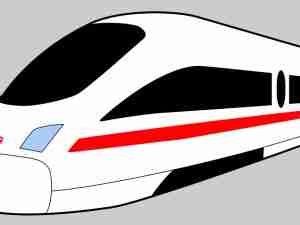With Bakken oil pipeline, Enterprise goes where others have failed
By: Reuters | Jun 26 2014 at 02:36 PM | Intermodal
Enterprise Products Partners LP proposed to build the first direct pipeline moving shale oil from the Bakken formation to the Cushing, Oklahoma storage hub, hoping to succeed where others have failed.
The 1,200-mile (1,900-km) pipeline will have a capacity of 340,000 barrels per day (bpd) adding supplies to the delivery point for U.S. crude benchmark futures. Enterprise aims to have the pipeline up and running by the end of 2016.
This is the first foray by Enterprise into North Dakota, home to the majority of the Bakken oil fields where, despite a boom in oil production, several pipeline projects have already failed. Undeterred, Enterprise says the project marks a geographical expansion in its operations.
"Our business right now is focused on Texas and Oklahoma," Brent Secrest, vice president of onshore crude oil, pipelines and terminals, said when announcing the project at a pipeline summit hosted by North Dakota's governor in the state capital. "The goal is we go further north."
Production has grown in North Dakota at paces rarely seen in oil formations around the world, which should bode well for companies building transportation infrastructure that has been lagging behind oil output.
However, out of five projects proposed in the past two years by Enterprise, Enbridge, ONEOK Partners LP, Koch Pipeline Co LP and Energy Transfer Partners, only Enbridge's 225,000-375,000 bpd Sandpiper pipeline is going ahead, and that runs eastward to Clearbrook, Minnesota.
Feeding Seaway?
At the moment the Bakken oil that is piped out, some 300,000 bpd, is taken east and eventually lands on Enbridge's pipeline system running from Illinois southwards to Cushing.
From Cushing, many of the barrels continue south to Gulf Coast refineries via the 400,000 bpd Seaway pipeline, operated jointly by Enterprise and Enbridge.
John Auers, industry specialist and Senior Vice President at Turner, Mason & Co, noted an influx of light sweet crude from shale plays such as the Permian and Eagle Ford in Texas into the Gulf Coast, where refineries are more suited to heavy oil.
"Moving Bakken into that surplus just doesn't make sense. The place you need Bakken is the West Coast and the East Coast to displace imports and that's why rail has taken off," he said, referring to the boom in transporting crude by rail.
Sandy Fielden, director of energy analytics at RBN Energy, noted the Seaway 'twin', a 450,000 bpd pipeline tracing the same course as the original Seaway, is due to come onstream soon.
"Maybe Enterprise is trying to steal those Bakken barrels before they go to Cushing (via Enbridge's system) so that they can bring them directly into Cushing and then route them onto Seaway," Fielden said.
"It may be an effort to make sure that there is enough crude for the Seaway because what happens this year is the Seaway twin comes online. That seems to be the only strategic game."
Some 60 to 70 percent of the 1 million bpd of North Dakota's production is railed out of the state, a trend that hit national headlines after several explosive train accidents.
Enterprise's proposed pipeline has the capacity to take half of the crude normally railed, but analysts say because no pipelines exist to transport crude to the East and West Coasts from the Bakken, rail transport will remain a viable option.
Mark Luitwieler, co-owner of Houston-based commodity terminal and railroad logistics company Peaker Energy, said Enterprise would have some tough competition for shippers, who have come to like the flexibility of crude by rail.
A railcar lease lasts three to five years, while pipelines typically require shippers to sign 10- to 20-year contracts.
"That's a hell of a commitment to make to something that you're doing right now for this and you're only having to commit three to five years," he said.
North Dakota Governor Jack Dalrymple said the state wants pipeline capacity to almost double to 1.4 million barrels of oil equivalent per day (boepd) by 2016, to curb the flaring of natural gas at wells beyond the pipeline system. (Reuters)






